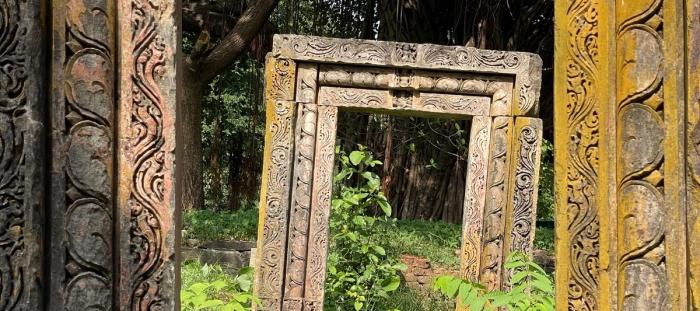In the ancient world, eyewitness testimony and miracles were considered strong evidence to believe the truthfulness of something. When Moses asked Pharaoh to free the Israelites, he performed various signs to prove the power of God (Exod. 7:8–12). Likewise, the apostles argued that their faith was true because God raised Jesus from the dead (1 Cor. 15:14–19). Today, however, people tend not to believe in miracles. They are considered superstitious and impossible, given the supposed greater knowledge of the world we now have through science.
In recent years, however, many Christians have been applying the very methods scientists have used to discredit the resurrection to prove the resurrection was a real event. This study is called ramified natural theology. Like natural science, natural theology seeks to examine Christian claims specifically through rational, objective procedure.
This rational procedure tests the claims based on their presuppositions, evidence, and logic. The common presupposition most people (Christian and non-Christian alike) hold is that the physical world exists and can be understood. With this presupposition agreed upon, scientists can look at the public evidence and standard reasoning for the resurrection of Jesus and see if it holds water.
1. Jesus’ Death
Jesus was scourged, which means he was flogged with spiked whips. These would have left serious gashes on his back and legs (Mark 15:15). The crown of thorns jammed into Christ’s head would have inflicted serious physical damage and blood loss before he was even nailed to the cross (Matt. 27:29). When he was nailed, the further physical effects of hanging on a cross would have caused Jesus to die of exhaustion and suffocation. Moreover, John’s eyewitness testimony to blood and water flowing out of Jesus’ side when pierced seems to be the evidence he presents to his readers that he saw with his own eyes that Jesus was really and truly dead (John 19:33–37).
This description of Jesus’ death has been examined by numerous medical professionals who confirm that his wounds would more than likely have resulted in his death. Even if Jesus had only swooned on the cross, the spear thrust that resulted in blood and water coming out of his side most likely punctured his lung and heart. Medical experts think that what John describes as blood and water was most likely blood and the clear fluid that surrounds the heart. This would have more than likely caused Jesus’ death, even if the biblical account had not told us that he “gave up his spirit” (John 19:30).
2. Jesus’ Resurrection
One way apologists have scientifically examined the variety of evidence for Jesus’ resurrection is by probability, mathematically comparing the likelihood of it happening versus not happening. Timothy and Lydia McGrew examined the evidence for the resurrection as opposed to evidence against it.[1] To ensure an unbiased result, the McGrews worked with information that is generally accepted by Christian and non-Christian scholars: the death of Jesus, the empty tomb, and the conversion of Paul.
To prove the resurrection is the most probable explanation for this information, three main pieces of evidence were analyzed. They used the women’s testimony of the empty tomb, each one of the disciples’ testimonies to seeing Jesus and their willingness to die for it, and Paul’s conversion to Christianity. Independently, they calculated the probability of each of these pieces of evidence proving the claim true, which resulted in a probability in favor of the empty tomb and Jesus’ resurrection. Their calculation would have looked something like this (where W, D, and P=evidence, X= naturalistic causes, R=resurrection, NR=no-resurrection):
R|(W) R|(D) R|(P)
NR|(X) NR|(X) NR(X)
When the probabilities of each of these pieces of evidence are multiplied together (R|W x R|D x R|P), the cumulative results of their probability calculations for each piece of evidence ended up favoring the resurrection by a huge factor (1044), meaning that from a mathematical perspective the evidence weighed heavily in favor of the resurrection being a real event. This high probability supports the claim of the Bible and the Christian church that Jesus did, in fact, come to life after dying. God graciously offers us more than enough objective evidence to prove the truthfulness of what he says.
3. Jesus’ Death and Resurrection Fulfilled Prophecy
Examinations of prophecy about Jesus’ death and resurrection have proven to be a source of verifiable public evidence that some are also examining by probability. We in the modern world are often ashamed of using prophecy as an argument. However, recent studies show that Old Testament prophecies about Jesus’ resurrection and surrounding events can also be examined using public, rational, and objective methods (i.e., criteria that is not biased either by supporters of the resurrection or opponents). The results of this examination have weighed heavily in favor of the argument that Jesus fulfilled the prophecies about his death and resurrection.[2] Further probability examination has shown that the odds of the prophecy coming true by chance or luck are one in a million. Examples of these prophecies are Isaiah 53, which prophesies that the Messiah will be rejected, despised, and pierced; Psalm 16, which declares that the holy one of the Lord would not be abandoned to hell; and Jesus’ own words when he tells the disciples that he would suffer, die, and be raised on the third day (Matt. 17:22–23; 20:18–19; 26:31–32; Mark 10:32–34; Luke 18:31–33).
While the evidence examined in these investigations is not new, it has withstood the modern methods of testing and examining. These kinds of examinations can serve us by pushing back against attacks characterizing Christianity’s central claim as irrational or lacking in evidence.[3] They can also help bolster our faith. It is important for us to remember that God himself has provided the proof that he alone is the true God who knows past, present, and future. When Thomas demands to see Christ’s hands, Christ graciously offers them for Thomas to see and touch. Even so, Jesus tells us that while many saw him and touched him and believed, “Blessed are those who have not seen and yet have believed” (John 20:29). God doesn’t have to prove himself to us; but in his gracious and loving condescension to us, he provided evidence of multiple kinds, so that “you will believe that I am who I am” (John 13:19).
Notes
- ^ “The Argument from Miracles: A Cumulative Case for the Resurrection of Jesus of Nazareth” by Timothy McGrew and Lydia McGrew in The Blackwell Companion to Natural Theology, ed. William Lane Craig and J. P. Moreland (Wiley-Blackwell, 2009).
- ^ “Best Practices for Prophecy Arguments” by Hugh G. Gauch, Jr. in Philosophia Christi 16, no. 2 (2014): 255–282.
- ^ “Natural Theology’s Case for Jesus’s Resurrection: Methodological and Statistical Considerations” by Hugh G. Gauch, Jr. in Philosophia Christi 13, no. 2 (2011): 339–356.




